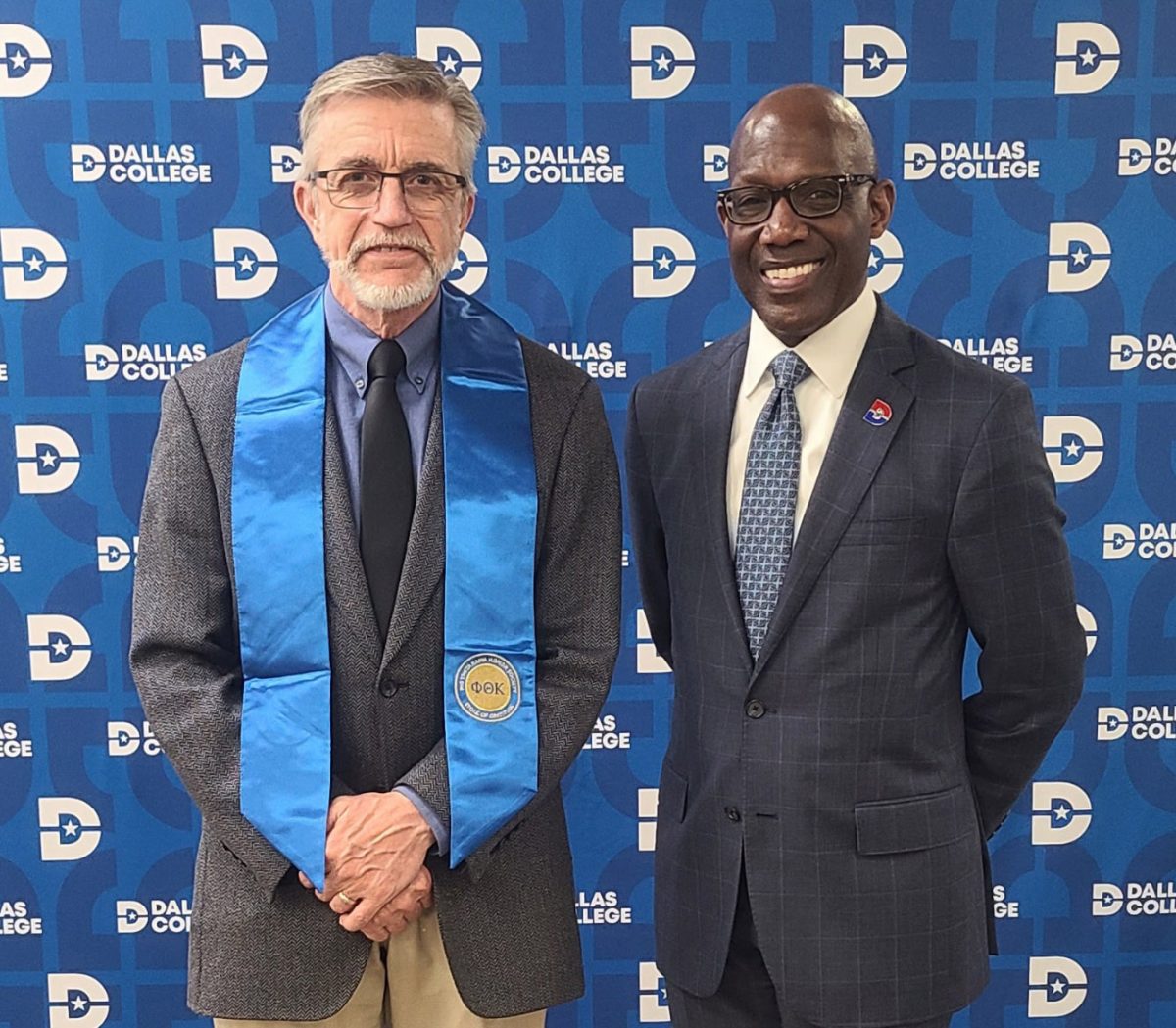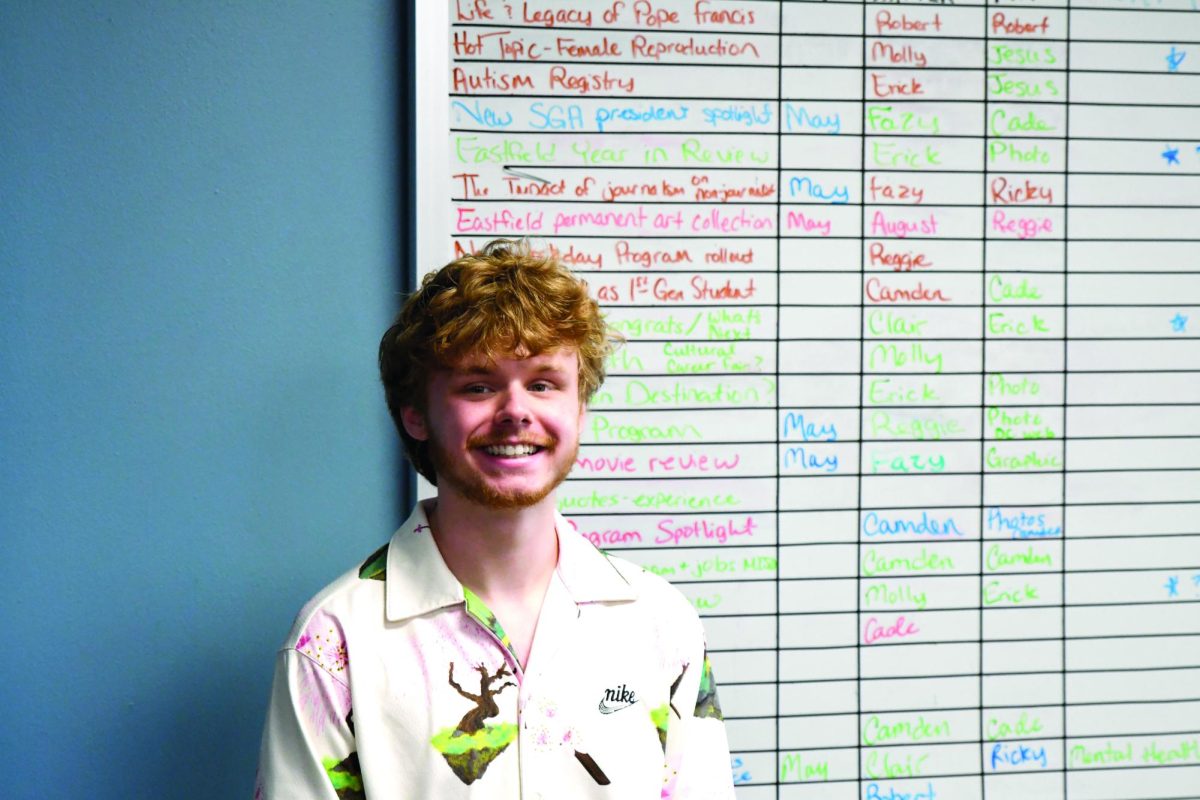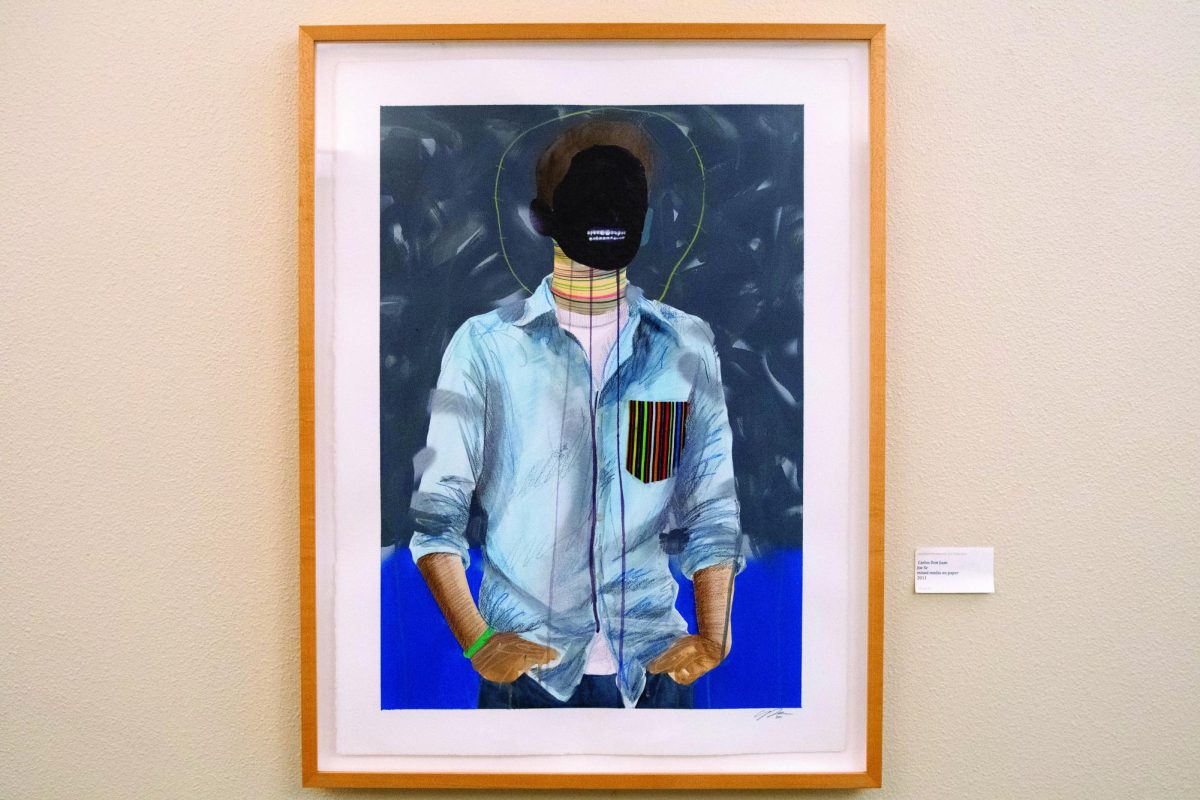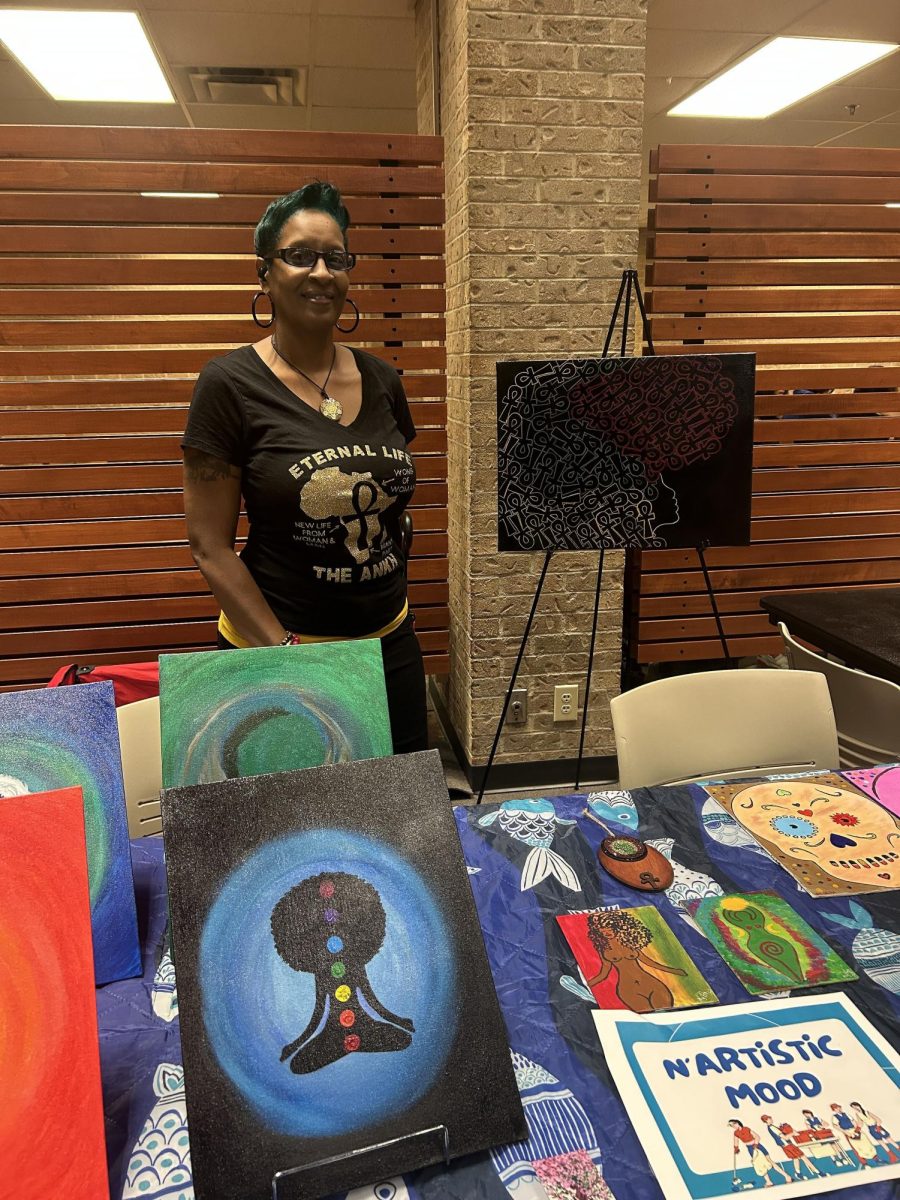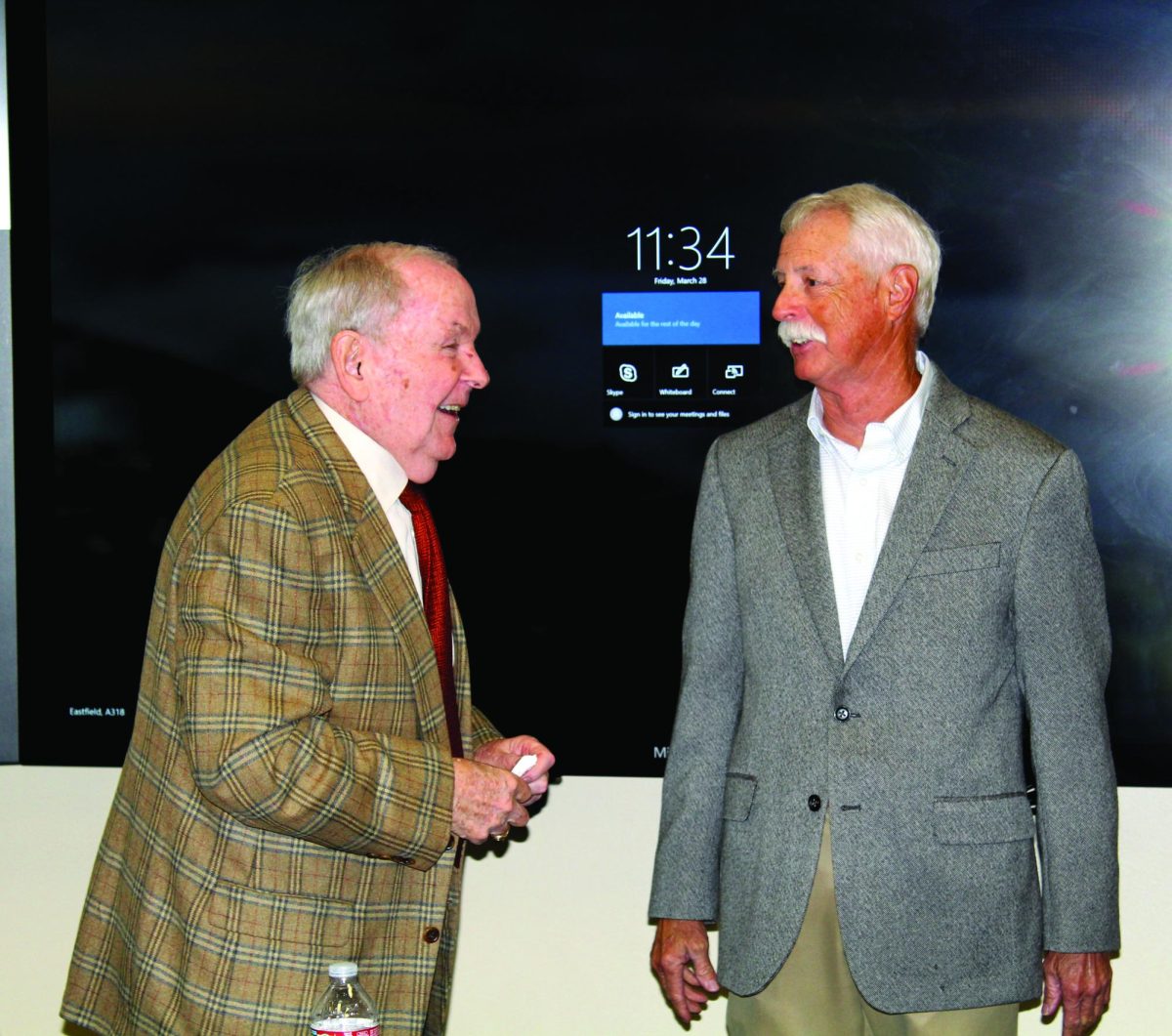By JESUS AYALA
@AyalaETC
Author Andrea Amosson shared how she uses location, history and characteristics of those she has met in her lifetime into her stories at an Oct. 19 common book event.
Held during Hispanic Heritage Month, Amosson’s talk focused on her most recent book, “Las Lunas De Atacama,” a novel based on Chile and personal experiences.
She was born in Antofagasta, Chile, but moved to Pedro de Valdivia when she was 6.
Children in the small town did a lot of playing outside before and after school, as well as telling scary stories to keep entertained.
There was only one hour of cartoon programing for kids on TV, and it was during school hours.
This left the children with little else to do indoors.
“What I really took out of it is the lack of entertainment growing up and the lack of TV and stuff led to the culture that’s really rich in storytelling, you know with Pablo Naru and poetry,” Eastfield student Taylor Smith said.
Pedro de Valdivia held to the traditional class-based system of rights and privileges that is still prevalent today.
Amosson brings a character, Wyetta, to life within this atmosphere.
“My characters are fictional characters, but I do have some things that I take from some people that I have meet along my life,” Amosson said.
Wyetta is the daughter of British immigrants, who felt like an outsider from those around her.
Her appearance is not like her parents. Her father assures her that she is their daughter while her mother stays quiet.
She later embraces a rebellious personality and escapes via train.
The story takes place during a time that Chilena miners, who play a major role in the culture and economy, were rebelling against poor pay and hazardous work conditions.
Miners were paid in what Amosson calls “funny money” because of its appearance.
The currency was specific to each city, making it difficult to improve life and living conditions by moving to a better setting.
Miners would riot against poor working conditions and the use of the funny money. Some of these riots would end in massacres, few of them leaving behind any official record, Amosson said.
Amosson said that in one recorded case in 1904, miners and their families were told to wait at a school “Santa Maria” for answers, only to have their demands answered by a firing platoon from the Chilean military. That’s where she drew inspiration for another character, Armando.
Armando is the son of a miner that may have survived a massacre that was not officially recorded. Altalaura, the narrator of the story, comes from South Chile for better conditions to work for Wyetta’s family.
She is a key to the story, representing the link between characters and social classes.
“What is the Atacama desert then? A harsh place to live … [but] to me is a good place to die,” Amosson said. “Chileans are very nostalgic. Most of the authors living abroad keep writing about Chile. It’s just a way to solve our problems with this nostalgia. It is a source of inspiration. I think the lack of things is what calls for imagination.”



